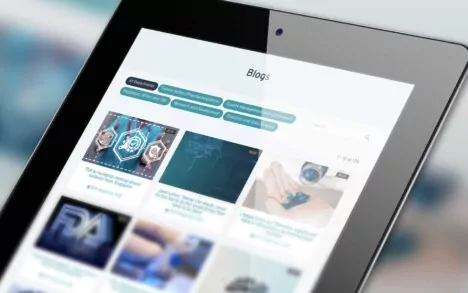A recent opinion piece on LinkedIn titled “Opinion: eCTD 4.0 – Just Say No!”[1] garnered attention across the industry. It spurred a discussion at the DIA RIM Working Group Meeting on July 10 and has led to a lot of thinking on our part. The problem with eCTD version 4.0 is not that it’s complicated and will lead to new costs — most of the publishing vendors have had prototypes for years, if not a decade, and will only require fine-tuning to comply with each agency’s specific requirements. And on the applicants side the eCTD compilation workflow adaptations and additional user training will not cause exorbitant costs – the work processes will mostly remain unchanged. The problem is that eCTD version 4.0, especially with the limited features currently foreseen in agencies’ implementations, raises some doubts about its benefits over eCTD version 3.2 and the justification for the change.
What we will get:
- The ability to more easily reference previously used documents, without dependence on the knowledge of agency file and folder structures.[2]
- The ability to update metadata (document titles, manufacturers, etc.) entered erroneously, or that needs to be changed for any reason, without having to delete and re-add documents in a dossier
- The ability to change document granularity while retaining the relationship with the previous version.
- Clear, consistent means of grouping or bundling submissions into a regulatory activity (most agencies support this, but in different ways).
- A simple way to update the Common Technical Document Table of Contents without rewriting software.
This last one is a big deal: each time an agency updates their Regional DTD (Document Type Definition) for Module 1 it has serious impact on software vendors’ systems. Their software must then parse a different XML structure and know how to display any new or changed elements. eCTD 4.0 should make it possible for those sorts of changes to be done without a software update, by just entering in new metadata for the changed items – where it belongs in the TOC, how many of that item can be included, and any other validation specifications. This alone should make eCTD 4.0 attractive to the software vendors – and their customers – by lowering the cost of maintaining those systems.
What we don’t get in the current implementations (draft everywhere but Japan) is two-way communication. This has the greatest potential for value in terms of speeding up review and tracking requests/responses. In Europe, EMA seems to have decided to instead use their IRIS platform for the back-channel communication with applicants, however this does not provide eCTD 4.0’s ability to link agency responses to particular sponsor documents and vice versa.
The other shortfall is that the RPS standard on which eCTD 4.0 is built was targeted by FDA for all submissions by all divisions, but they have declined to leverage the available standard. In the last few years, FDA has created new submission formats for device registration[3] and provided documentation on an “Alternate Electronic Format”[4] that could have been done using RPS. However, it does not appear that there are any initiatives to implement RPS-based review at the Centers for Veterinary Medicine (CVM), Device and Radiological Health (CDRH), Food Safety and Applied Nutrition (CFSAN) or Tobacco Products. Doing so would amortize the agency’s costs of implementing eCTD 4.0 across more than just drugs, providing substantial value to taxpayers and the regulated industries.
In his LinkedIn piece mentioned at the start of this blog, Matt Neal (currently leading Atara Biotherapeutic’s regulatory operations strategy) also had a number of discussion questions:
Am I missing something? Am I way off base? Is the eCTD 4.0 standard a necessary stepping stone to data submissions or can we leapfrog it?
eCTD 4.0 does not impact the progress toward data submissions – the content doesn’t change. But it does have the benefits described above. We still need a specification for all the sets of information to be delivered, regardless of whether it is data or narrative. Nevertheless, it does not prevent but rather paves the way for future enhancements without enforcing a completely new technology.
Were any of the stated benefits of eCTD 4.0 on the radar as key issues of the current eCTD? Is eCTD 4.0 a pain killer or a vitamin?
After more than a decade of living with eCTD 3.2, industry has learned to circumvent some of its shortcomings, or to simply live with it, but that doesn’t mean that the pain points are no longer there. The FDA’s goals of a single, changeable, simple format for multiple centers was one of the primary drivers – that is not being met today.
Do we want [software vendors] to spend their resources developing 4.0 when current eCTD tools are stable? Do we want eCTD 4.0 development to slow the pace and supersede features and functionality of our current tools?
Software vendors already provide updates and enhancements of their eCTD software on a regular and frequent basis. For most of them, the switch to eCTD 4.0 will not be an immense additional task, especially as most eCTD 4.0 concepts have been already been known for a decade and there has been plenty of time to accommodate or prepare for them. In the long run, eCTD 4.0 will reduce or simplify software updates, such as adjusting to changing regional specifications.
Could a minor DTD update be a bridge to the future instead of eCTD 4.0? Would IDMP be a better start?
A minor update to eCTD 3.2 would require substantial software changes to handle a new DTD. IDMP is relatively irrelevant to eCTD, although the EU’s implementation[5] will use SPOR data for administrative information.
Do we need two-way communication … or can we live with email and other portal solutions until the modern data submission of the future is in place?
Using the gateway for two-way communication has major benefits, primarily the ability for sponsor systems to notify, track, plan, and archive agency communications. We certainly manage today, but this could be a big enhancement to productivity, accuracy, and timeliness, especially for companies without an integrated RIM/eSubmission environment.
Is the need for eCTD 4.0 for all other types of regulated products – which currently have no solution – a driver which supersedes the change management needed for existing eCTD in pharma?
As described above, this should decrease the cost of the change by spreading it among multiple industries.
In the discussions at the DIA RIM meeting, Neal asked whether eCTD version 4.0 should be skipped in favor of something more forward-looking or data oriented. There is nothing in eCTD version 4.0 that couldn’t handle projected data-oriented submissions such as PQ/CMC[6]. While there are things in eCTD version 4.0 that could be improved, it is flexible enough to handle pretty much anything that needs to be sent between sponsors and agencies, between agencies, or between sponsors. We cannot forget that even with the move toward more and more complex submission of structured data, there will still be a need to also submit human readable documents to put the data into the right context. Improving the way we submit data should not prevent us from improving the way we submit documents.
Where are you in your preparation for eCTD 4.0? And what is your opinion about the new version and its current features? We would like to hear your thoughts on this important topic.
About the author:
Karl-Heinz Loebel is Director and Principal Consultant, Regulatory Operations, at PharmaLex. With more than 18 years of experience in regulatory operations, he has built his expertise in data management and the electronic exchange of information with regulators and has been a constant contributor to shared industry/agency forums on digital data exchange for the past decade.
[1] Neal, Matt. “Opinion: eCTD 4.0 – Just Say No!”, April 23, 2024. [Online] https://www.linkedin.com/pulse/opinion-ectd-40-just-say-matt-neal-6clwc/
[2] ICH M2 EWG. ICH eCTD v4.0 Implementation Guide v1.6, May 2024. [Online] https://admin.ich.org/sites/default/files/inline-files/eCTD_v4.0_Implementation_Guide.zip
[3] Electronic Submission Template for Medical Device 510(k) Submissions – Guidance for Industry and Food and Drug Administration Staff, October 2, 2023. [Online] https://www.fda.gov/media/152429/download
[4] Providing Regulatory Submissions in Alternate Electronic Format – Guidance for Industry, October, 2021. [Online] https://www.fda.gov/media/135951/download
[5] Table 3 of Electronic Common Technical Document (eCTD) v4.0 EU Module 1 Implementation Guide, Version 1.1, DRAFT for Updates 2024 https://esubmission.ema.europa.eu/eCTD%20NMV/eCTD%20v4.0%20EU%20IG%202024%20draft_1.1.docx
[6] Pharmaceutical Quality – Chemistry, Manufacturing & Controls, April 2024. [Online] https://www.fda.gov/industry/fda-data-standards-advisory-board/pharmaceutical-quality-chemistry-manufacturing-controls-pqcmc








